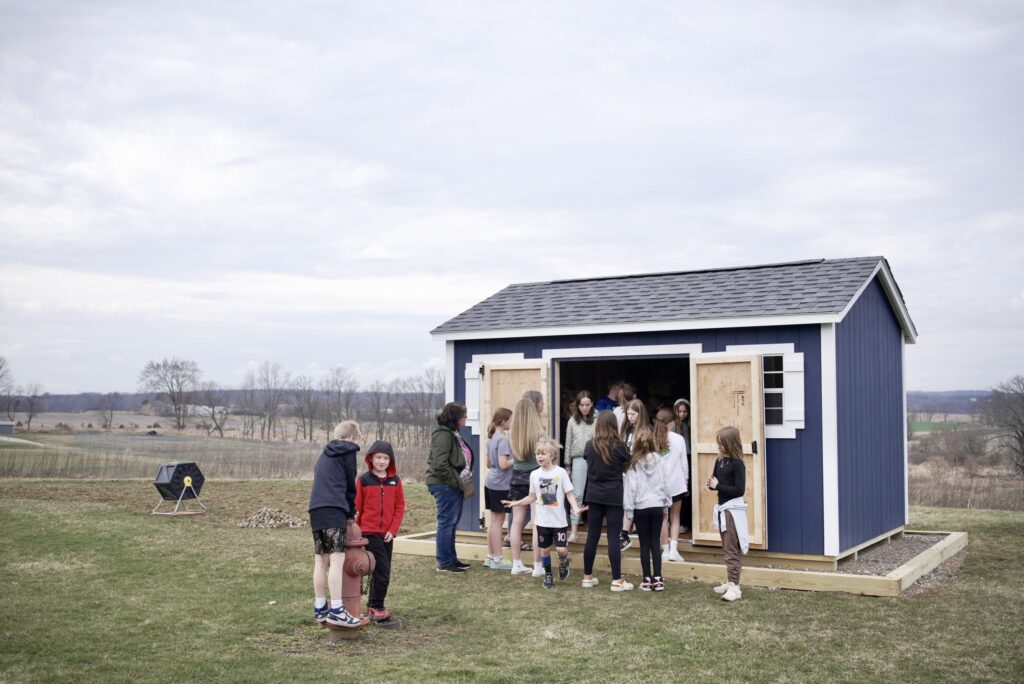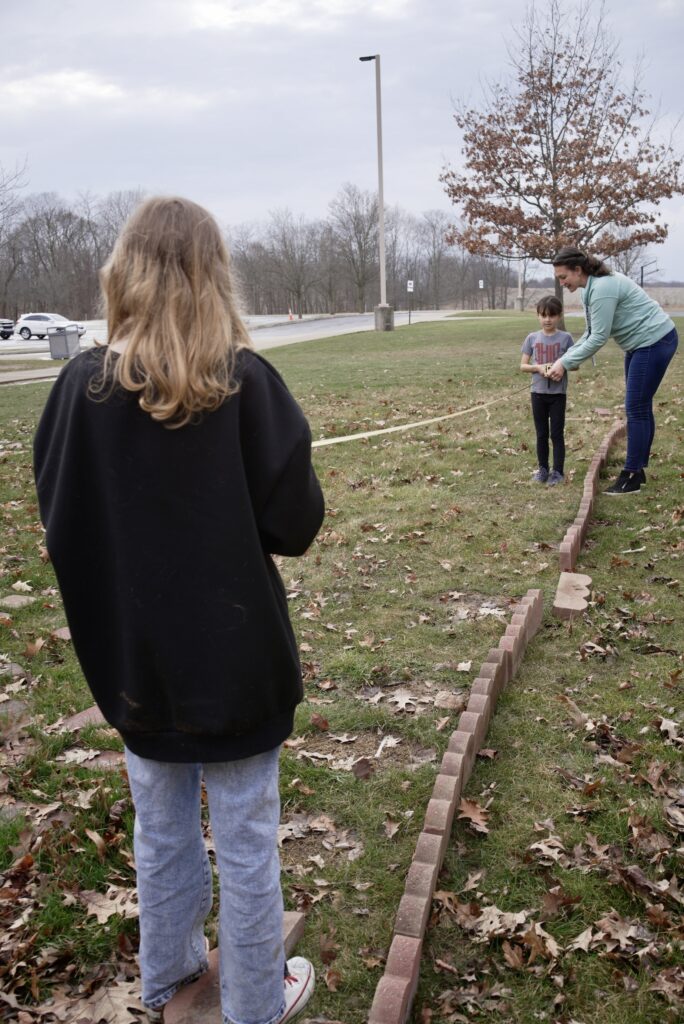Chatter quieted throughout the sixth-grade wing of Granville Intermediate School.
School had just ended on Tuesday, March 5, and roughly 25 children sprawled out across the gleaming blue and white tile. Their eyes and attention were trained on Emmy Morrow, a GIS parent with a degree in landscaping and founder of the school’s Garden Club.
Garden Club is new this year at GIS, and leaders like Morrow are taking on a significant challenge: getting students away from their phones and televisions.
“Garden Club is just about getting kids back outside, working with the land, and away from screens,” Morrow said.
The Centers for Disease Control and Prevention (CDC) report children ages 8-18 spend an average of 7.5 hours per day in front of a screen. It’s even higher for 11-14 year-olds, who average 9 hours per day in front of screens — about five of which are simply watching television.
The children listened attentively to Morrow and the four other leaders of the group as they explained their plans for today’s meeting.

Before students could partake in their activities of choice — working on a rock garden, planting seeds or preparing plants to go in the ground — the group took a look at a new shed, donated to the Garden Club by John Klauder Landscape and Design.
The shed, blue and white with windows and a shingled roof, marks the beginning of what will be a year-long endeavor for the club: A popcorn garden and a pumpkin patch for harvest in the fall.
That means the students in Garden Club will not just be planting succulents this year, but actually farming.
The project required a dedicated team of teachers and parents to pull it off, as well as thousands of dollars in community donations.
They stood inside the new shed, examining the recently installed shelving and spots for tools. Dustin Grime, a science teacher at GIS, explained the new shelving and the beginning of their projects to the students. Afterwards, they headed back inside to break into their groups.
One group headed out towards the playground. Another stayed inside. The last one headed out back toward the Granville Land Lab, a 90-acre outdoor education facility that surrounds Granville Intermediate School.
The playground group strutted through the halls and their chatter resumed. They burst through the doors of the building once more, where they found a small plot of land with scattered bricks and rock slabs in front of them. Andrea Imhoff, a special needs teacher and Garden Club co-founder, began to direct her group. Their task: Creating a handicap-accessible rock garden.
The students worked in unison to measure the plot of land for the rock garden. The land sits right outside one of the school’s special help classrooms, making accessibility imperative.
“When kids need a break, they can come out and walk it,” Imhoff said. “I want it to be accessible to all capabilities. I want to put native crops here and native plants that flower.” With the addition of native plant species, Imhoff hopes that the garden will not only attract people, but also wildlife. Eventually, her goal is to create a self-sustaining rock garden that does not need to be maintained.
On the other side of the building, students worked together to separate milkweed seeds from their pods. Grime works alongside Garden Club’s students to help them prepare the seeds. They do so in hopes of planting milkweed right between the school and land lab to build a “monarch way station” to serve as a habitat for endangered monarch butterflies.


At the way station, monarchs can be tagged and tracked along their migration journey, and later, the collected data can be used in Grime’s classroom.
With seeds and pods separated, the children are free to spread the cotton ball-like seeds across a small plot of land. The seeds float through the air with a single toss and are carried by the breeze.
Students smile ear-to-ear, watching the fluff float.
“It looks like snow!” one of them exclaimed.
Another child picked up a stick, claiming to be a jedi from the popular franchise Star Wars.
“Keep throwing them! I’ll block them all with my lightsaber,” they yelled.
The children danced, swung imaginary lightsabers, and spread seeds as if it was something out of a movie. Grime, who was kneeling on the edge of the soil plot, let a smile spread across his face.
Inside the building, the third group worked to plant seeds into donated toilet paper tubes packed with soil. One by one, the students placed seeds for flowers, jalapeños and sunflowers.
“Do you know what these are?” Morrow asked the group while displaying a package of radishes.
The radishes, she explained, will play a vital role in the creation of their garden by keeping insects away from other crops and produce. Radishes both repel pests that can kill plants in the squash family — like pumpkins — and attract insects away from other plants in the garden.
The group of 9- and 10-year-old students were rapt, fascinated by how plants and insects interact in their garden.
After their seeds were planted, the children placed them in a room with two sets of grow lights. There, the seeds could be watered and allowed to grow before being taken outside later in the season.
While the Garden Club is a new club at Granville Intermediate School, they have their sights set on some big projects. It’s nothing that these students cannot dig their way through.
Andrew Theophilus writes for TheReportingProject.org, the nonprofit news organization of the Denison University Journalism Program, which is funded in part by the Mellon Foundation and donations from readers.

